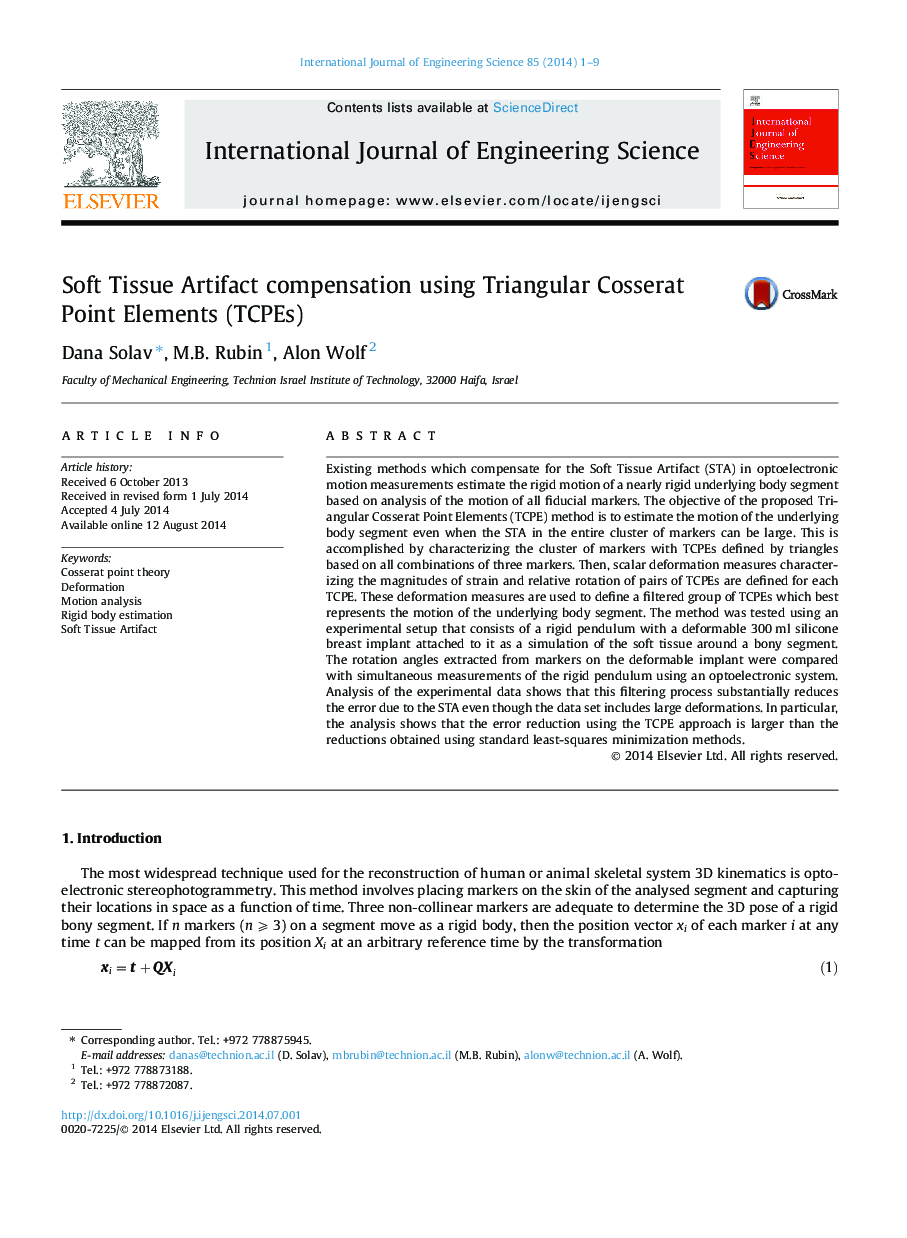| Article ID | Journal | Published Year | Pages | File Type |
|---|---|---|---|---|
| 824804 | International Journal of Engineering Science | 2014 | 9 Pages |
Existing methods which compensate for the Soft Tissue Artifact (STA) in optoelectronic motion measurements estimate the rigid motion of a nearly rigid underlying body segment based on analysis of the motion of all fiducial markers. The objective of the proposed Triangular Cosserat Point Elements (TCPE) method is to estimate the motion of the underlying body segment even when the STA in the entire cluster of markers can be large. This is accomplished by characterizing the cluster of markers with TCPEs defined by triangles based on all combinations of three markers. Then, scalar deformation measures characterizing the magnitudes of strain and relative rotation of pairs of TCPEs are defined for each TCPE. These deformation measures are used to define a filtered group of TCPEs which best represents the motion of the underlying body segment. The method was tested using an experimental setup that consists of a rigid pendulum with a deformable 300 ml silicone breast implant attached to it as a simulation of the soft tissue around a bony segment. The rotation angles extracted from markers on the deformable implant were compared with simultaneous measurements of the rigid pendulum using an optoelectronic system. Analysis of the experimental data shows that this filtering process substantially reduces the error due to the STA even though the data set includes large deformations. In particular, the analysis shows that the error reduction using the TCPE approach is larger than the reductions obtained using standard least-squares minimization methods.
